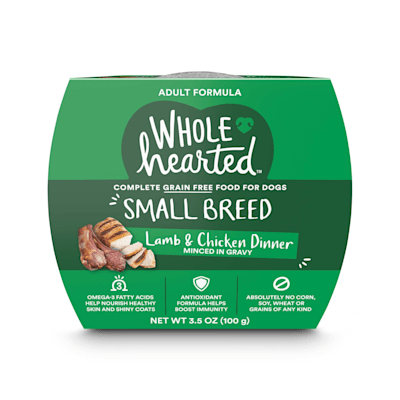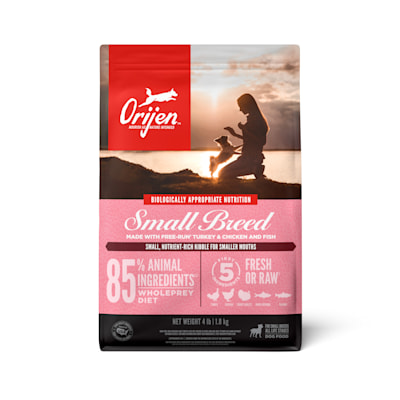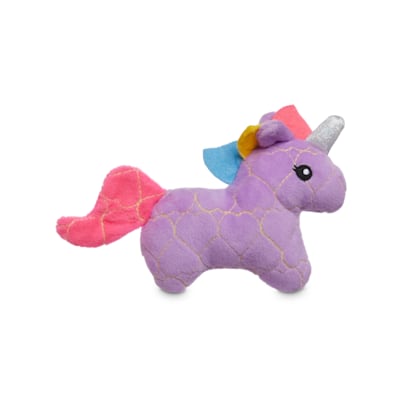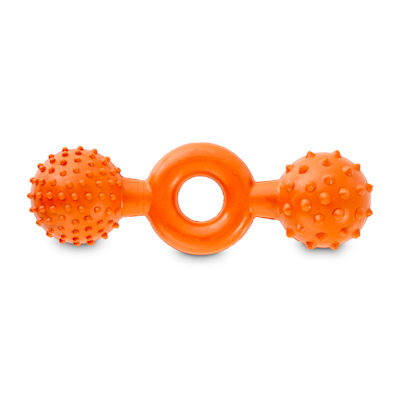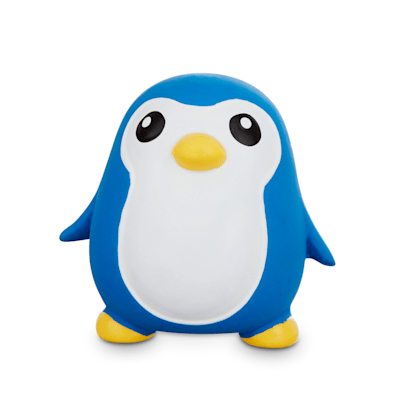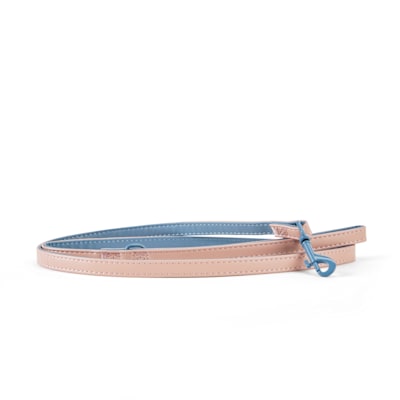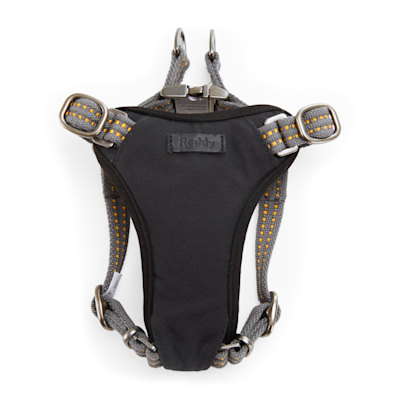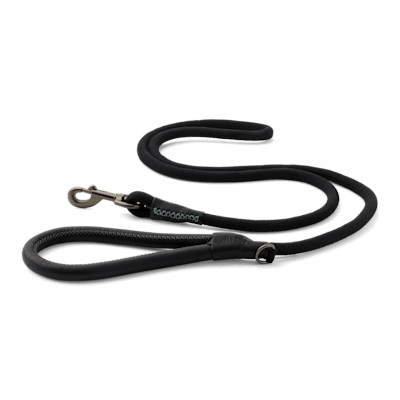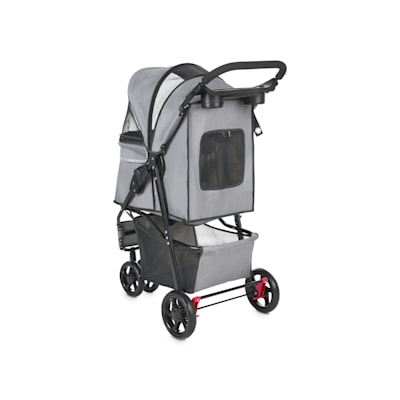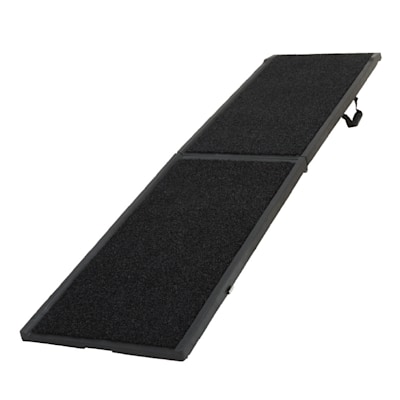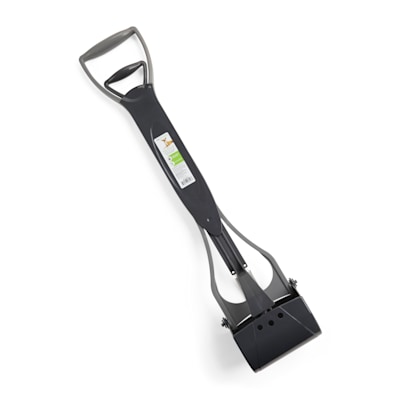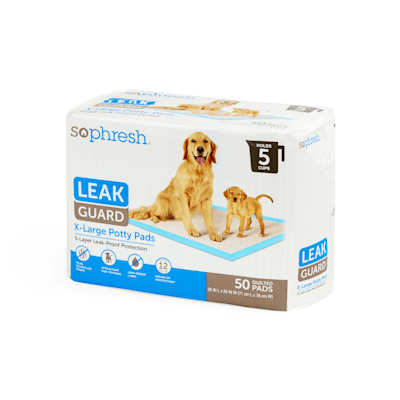
Dachshund
Dogs come in every shape, size, color and character combination imaginable. Each of them is unique, and all of them are special and worthy of love. But there’s something about Dachshunds that makes them stand out from all other breeds. Their distinctively long, low shape, mischievous personalities and affectionate nature keep Dachshunds high on the list of America’s most beloved dog breeds year after year.
The adorably long, low-slung body of the “wiener dog” comes from generations of breeding them to hunt badgers and other ground-burrowing animals. Their long body, short legs and sleek snout facilitated wriggling into underground holes to catch their prey. Today, they’re more likely to be found burrowing under blankets, but Dachshunds are as intelligent, curious and endearing as ever.
Whether you are already a Dachshund parent or are thinking of adopting one, you may have questions about their distinguishing qualities or how best to care for your wiener dog. This guide to the characteristics, care and keeping of Dachshund dogs is designed to answer pet parents’ most pressing questions about their little companions. If you’re curious about Dachshund health & wellness, effective training methods or their ideal diet, read on for useful tips to help bring out the best in your sausage dog.
Characteristics
Brave and bold, Dachshunds don’t seem to know how small they are—except when nestling into their pet parent’s lap. They are deeply loyal and affectionate with members of their household and ready to defend their loved ones with a big-dog bark—even if they’re only protecting against a delivery service. Dachshunds’ propensity for stubbornness and sneakiness is just a natural projection of their high intelligence and curiosity. Most pet parents are happy to take a little cheekiness in stride for the chance to enjoy time with such loving and entertaining pets.
Height
Measured from the floor to the top of their shoulders when standing or sitting
Standard: 8–9 inches
Mini: 5–7 inches (miniature)
WEIGHT
Their average adult weight
Standard: 16-32 lbs
Mini: Under 11 lbs
LIFE EXPECTANCY
The average number of years they live
12-16 years
COLOR
Common fur colors
Black, chocolate, cream, fawn, red, wheaten, wild boar, mixed
GROUP
Their AKC classification based on heritage, traits, form and function
Hound
Size
LIVING SPACE
EXERCISE
PERSONALITY
BARKING
PROTECTION
BEHAVIOR WITH KIDS
TRAINING
SHEDDING
CLIMATE
Diet and nutrition
A Dachshund’s distinctive build is instantly recognizable—sleek and agile yet almost comical in length. It comes from generations of breeding to facilitate the hunt of ground-burrowing animals. Though Dachshunds are no longer widely bred as working dogs, their unique physicality and small size require a diet that is thoughtfully balanced with their nutritional needs in mind. Some of the best food for Dachshunds is formulated with high-quality, nutrient-dense ingredients, with special consideration for the wellness needs that come with the Dachshund’s unusual shape. At Petco, we are pleased to provide many top small breed dog food options to help keep your little dog in high health.
Recommended supplies
Whether you’re a first-time pet parent figuring out what your new puppy needs or a seasoned parent to a senior dog, Petco’s round-up of the top Dachshund supplies chosen by pet parents will help you give your long dog the care they deserve. Some of the first things you’ll need include:
- A dog bed
- Potty training aids
- Waste bags
- Weather protective clothing
- Pest control solutions
- Small breed dog food
- Vitamins and supplements
- Grooming supplies
- Dog toys
- Dental treats
Training tips
There’s a common misconception that smaller dogs can be impossible to train. And while Dachshunds can be very set in their ways, their intelligence makes them perfect candidates for consistent positive reinforcement training
With consistent training, you and your pup can learn how to communicate and grow your bond. Training is also a great way to give your dog confidence and increase their happiness.
- Begin house-training your Dachshund puppy immediately to help ensure your pup doesn’t pick up any bad habits.
- If your breeder already started the house-training process, inquire about their routine and try to mimic it precisely so it’ll be a smooth transition.
- Create a smaller area for your puppy to spend time in while they’re still training. Use a play pen, baby gates or doors to keep them to one room.
- When house-training a Dachshund puppy, it’s important to be consistent. Their little bodies can only hold so much until they have to go pee or poop, so it’s best to take them out for bathroom breaks as often as you can. You shouldn’t let more than an hour pass between bathroom breaks. Always take them outside after they eat or drink as well. A predictable routine and consistent practice are key for your clever pup.
- Taking them to the same area in your yard to go will help remind them exactly what a trip outside is for. They will be able to smell their previous leavings and remember it’s potty time.
- Dachshund potty training always needs to be positive—yelling or scolding your pup will cause them to relate shame and anxiety with going to the bathroom. If they have an accident, simply clean it up and resolve to take them out to their potty spot more often.
- When they go to the bathroom outside, praise them lavishly. Congratulate them in an excited voice and give them lots of pets. Dachshunds are also very food motivated, so rewards in treat form usually work like a charm.
- Eventually, house-training a Dachshund puppy gets easier. They will learn to ask to go outside and do their business without treats, though it’s always a good habit to praise correct behavior even when they are adults. Just remember to do your part and let them out frequently.
- Adult dogs of any breed shouldn’t be expected to hold it for more than six to eight hours. The younger and smaller they are, the more frequently they’ll have to go.
- Crate training is a great way to keep your Dachshund secure when you need to leave your home or at night when you go to sleep. Many pet parents feel guilty about crating their puppy at first, but if used properly, crates can benefit both you and your pup.
- Don’t think of a crate as a cage—the smaller space helps them feel secure and may even help prevent separation anxiety down the road. It’s good for your dog to have an area that is just for them.
- Just like house-training, it’s good to implement crate training as soon as possible.
- The best way to train a Dachshund puppy to enjoy their crate time is to start off small. Leave their crate open and uncovered during the day. Lure them in with treats, and when they go in, don’t close the door—instead, allow them to get comfortable. Canines love to run and be outside, but when it’s time to wind down, some pups prefer close quarters.
- After a long play session, when your pup starts to get tired, lure them in with a treat or their favorite stuffed toy. Getting them to take their naps in the crate is a great way for them to associate crate time with relaxation time.
- Allow them to climb in and out of their crate freely. Then, try shutting the door and leaving the room.
- Before securing your Dachshund in their crate, remove their collar—it’s possible for it to catch on something inside the crate and become a choking hazard—and make sure the toys you leave for them can’t be torn up and swallowed.
- Eventually, they’ll become more and more comfortable being left alone. This will be a big help at bedtime.
- When crate training your Dachshund puppy, remember to give them bathroom breaks in the middle of the night as well.
- Making sure your Dachshund is respondent to your cues is more than just a convenience—it’s a necessity. Dogs are social creatures. They love to be with you and other humans. In order to do so, they need to learn how to be polite and well-behaved.
- Learning to communicate with your dog will help boost their confidence and make you feel more secure when taking them on outings and in everyday life. When you can’t communicate with your dog, it can put both them and others in jeopardy. It can also cause them needless anxiety and upset.
- Smaller dogs are more prone to territorial behavior or endless barking, but it doesn’t have to be that way. With the right Dachshund training tips, you can help them unlearn those habits—or better yet, make sure they never form in the first place.
- When it comes to training miniature Dachshunds, medium Dachshunds or any dog, remember to start them out early, be consistent and use positive reinforcement.
- Dachshunds can be strong-willed, but as the pet parent, you’re in control. Stick with the same cues so they don’t get confused. Keep training sessions short—these dogs are highly intelligent, but their attention span is small, especially as a puppy. And always make reinforcement positive—if you find yourself getting frustrated, it’s best to stop the training session because they may notice your energy and get confused.
Potty training tip: Smaller dogs have smaller bladders
Crate training tip: Crates should never be used as a punishment
Training tip: Positive reinforcement training helps lead to a lifelong bond between you and your pup
Suggested Dachshund training services
Following a Dachshund training guide can be beneficial, but sometimes you just need to call in a professional. Petco offers classes led by AKC Canine Good Citizen® evaluators, who use the power of positive reinforcement to help your puppy excel.
We understand professional classes may be hard to fit into your busy schedule. That’s why we offer a variety of options—you can do group classes at your neighborhood Petco Pet Care Center or opt for one-on-one training. Don’t have a Petco near you? Our online group or private lessons may be a better fit.
We have training classes for all ages. We also offer specialty training sessions for issues like separation anxiety with our online program. Our classes can give you and your pup the tools needed to communicate efficiently, which means less stress for you both.
Common Dachshund health issues
There’s no dog silhouette more recognizable than that of the Dachshund. Long, low and lovable, these hounds have become one of America’s most popular dog breeds—not just for their remarkable looks, but also for their loyal and lively personalities. Dachshunds are also adaptable in many ways, finding themselves at home in both city-center apartments and suburban homes with lots of yard space. These dogs have plenty of fans, but they are also prone to some diseases and disorders, many arising from or exacerbated by their unique shape. The more you learn about possible Dachshund health issues, the better equipped you’ll be to identify potential problems and get your dog the help they need. That way, if you notice your Dachshund acting strange, you’ll be more able to assess whether they need help—or whether they’re just exhibiting classic Dachshund behavior.
Dachshunds’ most recognizable feature—their extra-long body—is also one of the physical characteristics most likely to be a source of health issues. A long body means a long spine, and this length can put additional stress and pressure on your dog’s vertebrae and discs, making your Dachshund susceptible to intervertebral disc disease and other back problems.
How to spot it
If your Dachshund shows any of these signs, seek veterinary services immediately.
- Trouble lifting their head
- Signs of pain
- Lack of appetite
- Yelping when touched
- Shivering
- Walking with a limp
- Displaying other disturbances to their mobility like no longer wanting to run after toys
Potential treatments or preventions
Depending on the severity of your Dachshund’s spinal problem, your vet will likely recommend medication or even surgery. You can help reduce the risk of spine issues by making sure your dog doesn’t struggle to navigate furniture or stairs that are too tall for their short legs without help and doesn’t engage in overly rough playtime. It’s also crucial to carry your Dachshund correctly, in a well-supported horizontal position that doesn’t strain or bend the dog’s back.
Some Dachshund illnesses originate in the hips and legs. Short legs mean extra pressure on Dachshunds’ joints, so problems such as luxating patella (a dislocated kneecap) or hip dysplasia (an improper fit of the leg bone into the hip socket) can become problems.
How to spot it
These signs could point toward luxating patella, arthritis, hip dysplasia or other wiener dog health issues that affect the joints:
- Walking with an irregular, stiff or hopping gait
- Avoiding running around
- Developing a noticeable weakness in the hind end
Potential treatments or preventions
You can support your Dachshund’s bone, cartilage and joint health through proper diet, nutritional supplements and breed-appropriate recreation that doesn’t overly strain their legs and hips. Dachshund-appropriate play involves limiting the distance they’re running, leaping and any strenuous swimming.
Dachshunds are more prone to obesity than some other breeds. Because of their size and shape, Dachshunds shouldn’t partake in rigorous physical activity, as it could overly stress their joints and spine. Since strenuous exercise isn’t a recommended means of maintaining a healthy weight, it’s especially important for Dachshunds to be on a precise diet. However, Dachshunds are so small that it’s easy for pet parents to overfeed them; even a small increase in the amount of kibble given can mean too many calories. Another serious contribution to unwanted weight gain can be adding too many treats or table scraps to their veterinary-approved dietary feeding quantities.
How to spot it
You’ll likely notice when your Dachshund is putting on weight and can take them to the vet or put them on your scale at home to get an accurate read
Potential treatments or preventions
Many Dachshund health issues can be worsened by obesity. It can put extra strain on the spine and joints, worsen your pup’s breathing problems and lessen their overall quality of life. You can help your Dachshund stay fit by feeding them a nutritious, breed-appropriate dry food and making sure they get at least 30 minutes of exercise daily. Remember, avoiding strenuous exercise does not mean avoiding exercise altogether. Brisk walks and games of fetch can help keep your Dachshund in shape.
There are several eye problems this breed can develop, and some are more serious than others. Progressive retinal atrophy (PRA) is a genetic disorder that causes a dog’s retinas to degenerate and eventually leads to blindness. Other issues that can affect their vision include cataracts, eye infections and dry eye syndrome.
How to spot it
During grooming, check your dog’s eyes for signs of:
- Irritation
- Clouding
- Symptoms of vision loss, such as confusion or clumsiness
Potential treatments or preventions
While medication or surgery can help treat some Dachshund eye problems, PRA may lead to blindness. With proper care, your pup can still live a full and active life while vision impaired.
Dachshunds are prone to skin allergies and to a genetic thickening and darkening of the skin called acanthosis nigricans.
How to spot it
These wiener dog health issues can lead to symptoms like
- Itchy skin
- Scaly skin
- Inflamed skin patches that are susceptible to infection
Potential treatments or preventions
Your veterinarian may recommend a prescription-strength topical steroid cream to combat itchiness, a dog allergy medication to reduce skin allergies or an antibiotic to treat any infection that may have developed.
Grooming your Dachshund
Dachshunds are small, and Miniature Dachshunds are even smaller. That’s not just good news for pet parents who want to snuggle with a perfectly sized cuddle buddy—it’s also good news for pet parents who don’t want to see a big-dog-sized tumbleweed of fur rolling across the floor. Of course, grooming is about more than just keeping fur under control. Grooming is an essential part of caring for your Dachshund’s overall wellbeing and gives you a chance to check their skin, eyes, ears and mouth. All that intimacy is also good for bonding with your pup and reinforcing trust.
-
Brushing
The type of brushing your Dachshund needs depends on which type of Dachshund dog you have. Smooth-haired Dachshunds have short, glossy fur that is relatively easy to maintain and can be brushed about once weekly with a grooming glove. Longhaired Dachshunds can be groomed with a bristle brush after tangles have been carefully picked out with a comb. Wirehaired Dachshunds can also be groomed with a bristle brush. Be extra gentle with the long hairs around your pup’s face.
-
Bathing
The main thing to remember when bathing your Dachshund dog is how short their legs are. Many Dachshunds dislike the sensation of moisture brushing up against their body—part of the reason they may be reluctant to go outside and do their business on damp grass—so be sure to keep bathwater low, around knee-height for your Dachshund. After wetting your dog, use your hands and a washcloth to gently rub dog-safe shampoo into their body in sections and rinse thoroughly. If you get water in your dog’s ears, take care to swab them out gently but thoroughly with cotton pads. Longhaired Dachshunds may need to be bathed as frequently as every few weeks, but smooth-haired and wirehaired dogs might only need bathing once every month or two. Over-bathing can alter their skin and coat’s natural defenses, so it is not recommended.
-
Nail trimming
Your stubborn Dachshund dog may resist nail trims, but it’s important to keep claws tidy so they don’t snag on something and hurt your dog’s feet. If you hear your dog’s claws clacking against the floor, it’s past time for a trim. The headstrong and sometimes nervous Dachshund temperament will be less of an obstacle at trimming time if you make a habit of touching your Dachshund’s feet regularly during playtime, cuddle time and grooming. That way, your dog won’t automatically associate pressure on the paws with unpleasant activities. When it’s time to clip your dog’s claws, place your Dachshund on your lap and hold their body gently but firmly in place. Take a paw in your hand and clip each nail at a 45º angle, being careful not to cut the tender quick. Some pet parents prefer electric grinder-style nail trimmers, as they allow for greater control, but you can use traditional clippers if the noise of the nail grinder stresses your dog.
-
Teeth brushing
Toothbrushing is as important for dogs as it is for their pet parents, but the stubbornness of the Dachshund breed may make some pet parents wonder if it’s worth entering a battle of wills for the sake of oral hygiene. Fortunately, dog-safe toothpaste comes in pup-friendly flavors like meat or peanut butter. Be sure to use a dog-safe toothbrush and plan to brush your Dachshund’s teeth a few times a week. It’s also recommended that you schedule an annual professional teeth cleaning for your pup.
-
Professional grooming
The wiener dog breed is small but mighty—which may manifest as a mighty stubborn resistance to being bathed and groomed. Why not let the professionals step in? Petco’s trained groomers will indulge your Dachshund dog with a breed-specific grooming session and a 7-Point Pet Care Check. You can add optional grooming services for a fully customized experience.
Adopt a Dachshund
After their distinctly unusual yet elegant silhouette, the most attractive feature of the Dachshund to many pet parents is this dog’s personality. Their temperament is one of alertness balanced by a seemingly insatiable craving for their pet parents’ love and attention. Though Dachshunds seem constantly vigilant and frequently signal any disturbance with a bossy bark, they’re also content to spend long periods of time snuggled up with their family members. Not every Dachshund dog is alike, but many members of this breed tend to be mistrustful or territorial around strangers. With proper training and socialization, Dachshunds can learn to be more relaxed and accepting of outsiders. Despite their sometimes-protective nature, Dachshunds usually learn to get along very well with other pets and children who share their household.
Dachshunds are a good fit for homes of just about any size, as their smallness and love of burrowing into cozy corners mean that apartments suit them just fine. In fact, if you have a large home, you may have to keep an eye on your Dachshund to make sure they don’t try to go up and down stairs that are too tall for them. As long as you have enough room to let your Dachshund play fetch in the living room or a schedule that allows for a few walks a day, you can feel good about adopting a Dachshund dog into your home—no matter what size they may be.
FAQs about Dachshunds
Find out what prospective pet parents are most curious to learn about the Dachshund breed.
There’s no single breed of dog that’s universally perfect for every household, but plenty of people agree that Dachshunds are hard to beat. Dachshunds remain one of the most popular dog breeds in the USA because of their convenient size, adaptability, loyalty and, of course, their immediately recognizable shape. Dachshunds are cute, comical and clownish, providing hours of entertainment with their roly-poly antics and adorably long ears. They’re also perfectly sized for snuggling and have a loveable personality to match.
Their strong, persistent bark is a wonderful alert system, and they are fiercely loyal to family members. Dachshunds are also adaptive to households that contain other pets and kids, and they’re equally at home in tiny apartments and spacious quarters. The ideal pet parent for a Dachshund is someone who’s patient and attentive, as these dogs can be stubborn—especially during training—and crave affection. If you’re willing to devote the time it takes to train your Dachshund kindly with positive reinforcement, you’ll be rewarded with a deeply loving companion whose greatest joy is spending time with you.
Dachshunds are highly intelligent animals, but that intelligence may show itself in surprising ways. Some smart dog breeds take direction well, excelling at training, agility or even specialized service tasks. Dachshund intelligence is more likely to display as cleverness—which doesn’t always make life easier for pet parents. Dachshunds are stubborn, and it can take a lot of convincing for them to do things they don’t want to do, though treats can be a great motivator. Dachshunds are also curious and crafty, finding ways to silently sneak snacks at lightning speed or reach seemingly impossible heights to access forbidden food. This cleverness can sometimes lead to frustration but also provides plenty of entertainment and humor. Dachshund pet parents experience the joy and fascination of watching a smart, curious, independent dog explore the world and make it their own.
The Dachshund breed can be a great fit for some first-time pet parents, but whether or not the needs and preferences. Dachshunds—and especially Miniature Dachshunds—are small enough for many first-time pet parents to handle easily. Due to their adaptability and good nature, Dachshunds are a great fit for people who may live in an apartment, have roommates or both. And Dachshunds are deeply affectionate, which can give new pet parents a much-needed boost of confidence.
However, if you don’t have the time or patience to devote to properly training and socializing your dog, a Dachshund might not be an ideal fit for you. Dachshunds are stubborn and require methodical obedience and potty training, and they can become hostile toward strangers if not socialized effectively. Dachshunds also need plenty of affection and quality time with their pet parents to feel safe and secure. If you don’t feel ready to devote the time and energy a Dachshund dog needs, it may be best to choose another breed as your first dog.
Yes, Dachshunds tend to bark—a lot. Dachshunds were originally bred as hunting dogs, and they retain the powerful urge to use their voices for signaling purposes. You and your pup may disagree on what exactly needs to be signaled—for instance, you may not believe the arrival of a visitor at the door or the sound of a siren three streets over needs to be commented upon—but many pet parents welcome the sense of safety a Dachshund’s bark brings. Dachshunds typically have strong, clear voices, and a Dachshund’s bark and howl can be an effective security alarm. There will likely be times you’re very grateful that your loyal hound picks up a sound and raises a resounding warning before you’ve even heard a noise.
Dachshund puppies are so unbelievably cute that it almost makes up for how hard they are to potty train. Unfortunately, training Dachshunds is notoriously difficult, and that includes potty training. Keep in mind that this isn’t due only to the breed’s clever temperament, it’s also a simple matter of anatomy. Dachshunds have very short legs, meaning that going outside to do their business often entails prickly stalks, wet grass and other unpleasant sensations touching their bellies and bodies. Since Dachshunds are so devoted to their pet parents, abundant praise goes a long way in potty training a Dachshund. Potty training is also a great time to use treats for motivation. And proper apparel for cold or wet weather can help encourage your Dachshund to walk outside when it’s chilly or rainy. With consistency and patience on your part, you can look forward to success in potty training. Have questions about potty training? Reach out to a Petco-certified dog trainer for support
A healthy weight range for Miniature Dachshunds is 8–11 lbs. That might seem low, especially for such a sturdy and energetic dog, but Dachshunds are prone to obesity—and you’ll quickly notice negative health effects if their weight becomes too heavy. It’s also important not to underfeed your dog, but chances are you’ll have to pay greater attention to whether they are getting too much food rather than not enough. Obesity can put extra stress on Dachshunds’ already vulnerable spines and joints, and it can force their heart and lungs to work harder than necessary. Miniature Dachshunds may need as little as 3/4 cup of food per day, divided into a morning meal and an evening meal. If you find that your miniature Dachshund looks too lean and their ribs are showing, you can increase their food a bit. Remember to incorporate 30–60 minutes of low- to moderate-impact exercise into your Miniature Dachshund’s daily routine to help them stay in good shape.
- Dachshund Dog Clothes
- Dachshund Food
- Mini Dachshund Pet Supplies
- Dachshund Dog Costumes
- Small Dog Training Essentials
- Dog Show Grooming Essentials
- Best Dog Treats For Dachshunds
- Costumes For Dachshunds
- Best Supplements For Dachshunds
- Dog Training Essentials For Small Dogs
- Christmas Dog Grooming Essentials
- Best Food For Dachshund Puppy
- Yorkie Grooming Supplies
- Dog Training Needs
- Dog Bath And Grooming Essentials
- Dog Training Gear
- Long Haired Dog Grooming
- Dog Grooming Supplies
- Miniature Schnauzer Supplies
- Dog Training & Behavior Supplies
- Wee-Wee Dog Training & Behavior Supplies
- EveryYay Small Animal Grooming & Bathing
- EveryYay Dog Training & Behavior Supplies
- Dandy Pet Dog Health & Wellness
- Be One Breed Dog Beds & Bedding
- Wahl Dog Grooming Supplies
- RESCUE Pig Grooming, First Aid & Insect Control
- HICC Pet Dog Health & Wellness
- Pet Life Dog Grooming Supplies
- Simple Solution Dog Training & Behavior Supplies
- KONG Dog Training & Behavior Supplies
- Caldera Dog Health & Wellness
- K&H Dog Health & Wellness
- Mobile Dog Gear
- Browning Dog Outdoor & Travel Gear
- PetSafe Dog Training & Behavior Supplies
- Petstages Dog Training & Behavior Supplies
- Sentry Dog Health & Wellness
- Hunger For Words Dog Training & Behavior Supplies
- Wee-Wee Dog Potty Training & Cleanup


